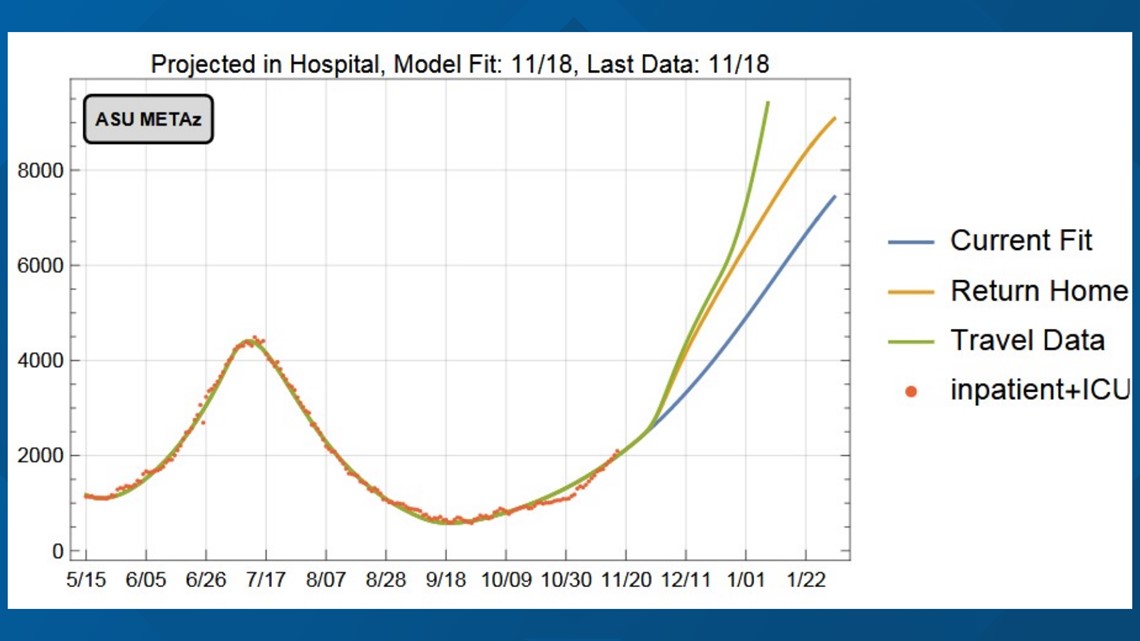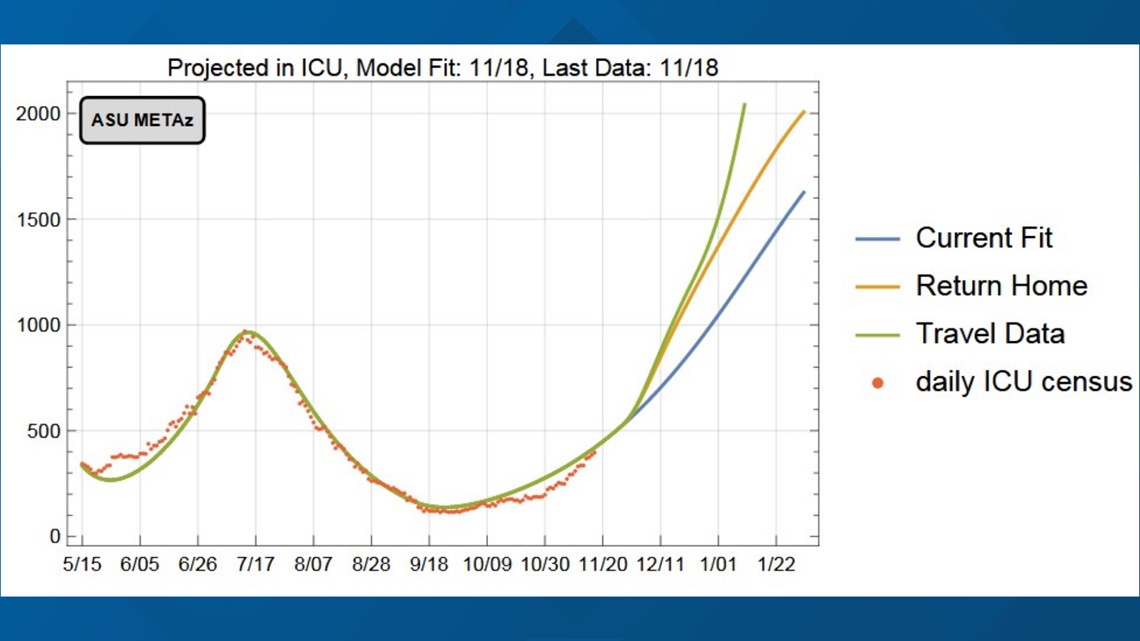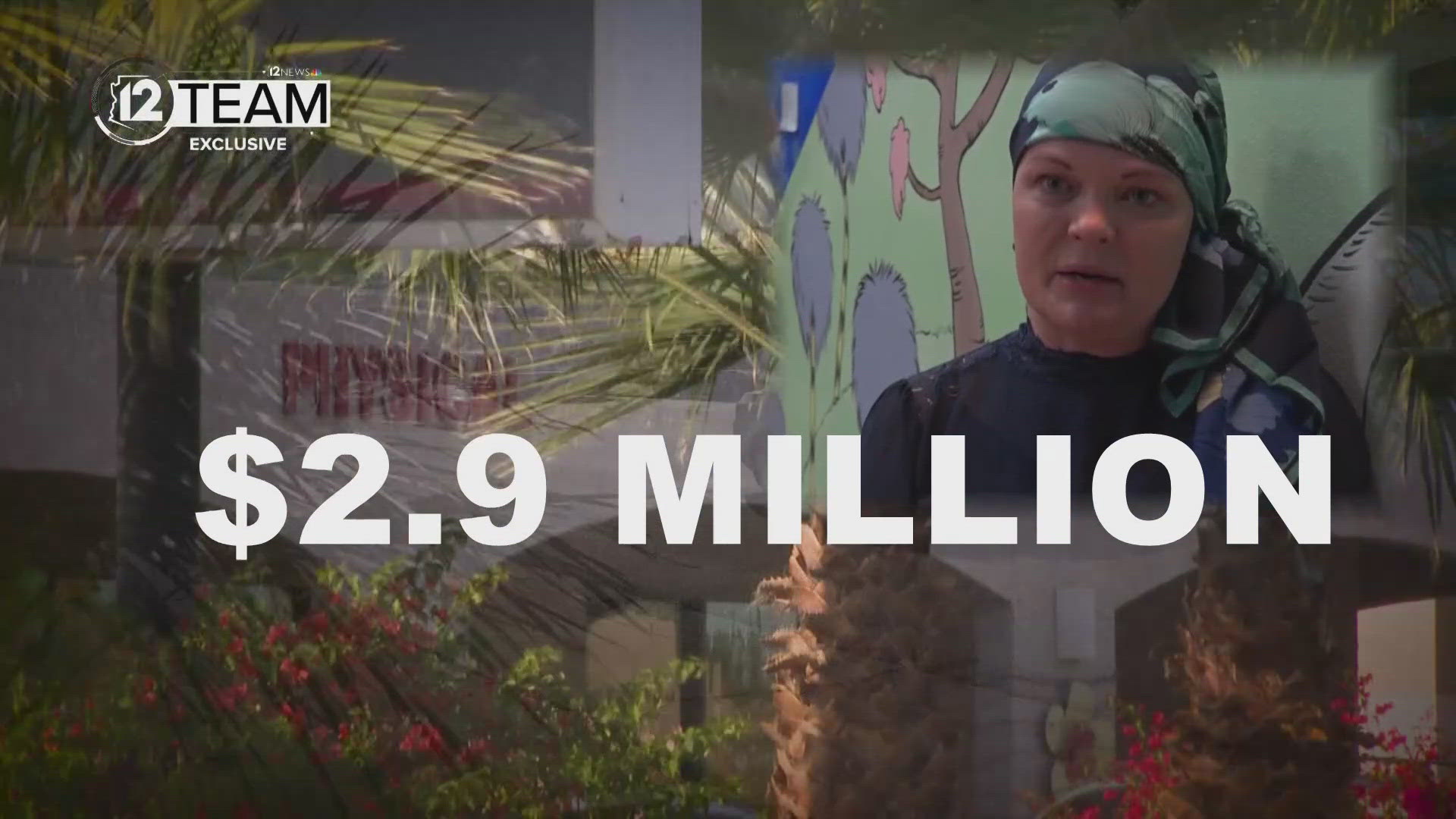ARIZONA, USA — Hospitals in Arizona and Maricopa County may become over capacity while seeing record-breaking numbers of COVID-19 patients after Thanksgiving this year, according to data from a recent Arizona State University Biodesign Institute report.
The report, which is a "COVID-19 Modeling Update" released on Nov. 19, graphs the potential rise in multiple metrics of the virus in Arizona due to holiday travel.
Metrics such as hospital occupancy and total amount of infectious people with COVID-19 are projected to increase to the highest amounts the state has ever seen in December, even higher than the peaks seen in late June and early July.
Below are the three things you should know about the data from the recent ASU report. You can read the full report here.
No. 1: Report makes assumptions about amount of people traveling during holidays
There is an assumption that around 1 million Arizonans will be traveling more than 50 miles and around 2 million will be traveling less than 50 miles for the Thanksgiving holiday this year, the report says on page 24.
The sources for these assumptions are listed as a recent press release from AAA Arizona and a 2015 survey about holiday travel from Statista.
From these assumptions, the biodesign institute created three scenarios when it comes to possible COVID-19 spread during the holidays.
The first scenario, titled "Return Home," creates projections for virus spread based on more assumptions. They include the assumption that the 45% increase in COVID-19 cases that Canada saw after its Thanksgiving holiday on Oct. 21 being transferable to the United States and another assumption that families will return to normal contact patterns after Thanksgiving and will not travel for other winter holidays.
The second scenario, titled "Travel Data," makes projections based on the assumptions that seasonal travel increases will be unchanged compared to previous years despite the pandemic and that the lengths of travel periods will remain the same.
The third scenario, titled "Current Fit," creates projections where no increase in transmission is seen during the holidays.
No. 2: Arizona's hospitals will be over capacity in December under every projection
No matter which of the above assumptions are made, the amount of people in Arizona hospitals with COVID-19 are projected to reach record-breaking amounts sometime next month.
Under the "Return Home" and "Travel Data" projections, hospitals will see the most COVID-19 patients they've ever seen in mid-December. Even if no changes in transmission of the virus are seen during and after holiday travel, as the "Current Fit" model projects, hospitals will still see their highest numbers in January.
"Arizona will likely surpass the prior July peak of hospital beds occupancy with COVID-19 patients as soon as December 28 with holiday travel and by the third week of January with current transmission and no increase in holiday travel," the report said.


The amount of people specifically in hospital ICUs is also projected to reach record-breaking numbers under every projection.
ICUs will see the highest amount of patients with COVID-19 in mid-December under the "Return Home" and "Travel Data" projections, while the "Current Fit" model still has record-breaking numbers being seen in late December or early January.


No. 3: Holiday gatherings will likely cause between 600 to 1,200 additional COVID-19 deaths in Arizona without additional public health measures
The report states that in addition to increased hospitalizations, the state will also see increases in the deaths already projected to rise in the coming months due to Thanksgiving travel.
"Without additional public health measures, holiday gatherings are likely to cause 600-1,200 additional deaths from COVID-19 in Arizona by Feb. 1 beyond current scenario death projections," the report said.
Measures such as a state-wide mask mandate, preventing gatherings of more than 10 people, closing bars, and decreasing capacity restrictions at restaurants with effective enforcement were recommended by the biodesign institute in order to preserve the capacity of health care and not to overwhelm hospitals.




